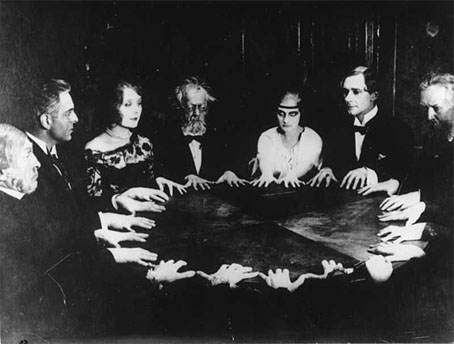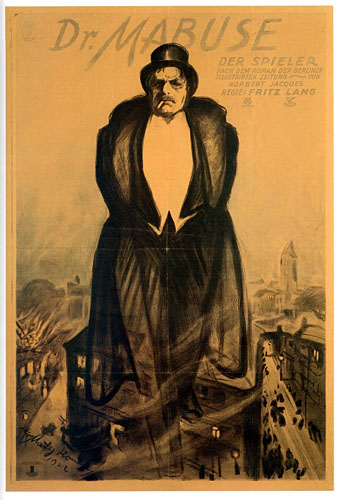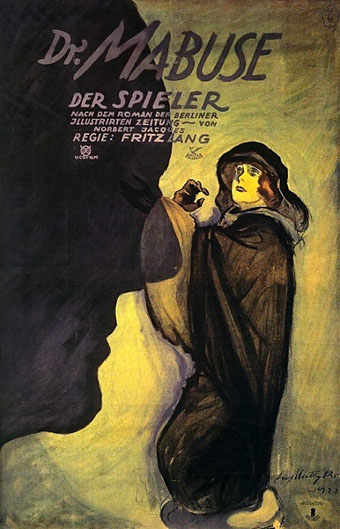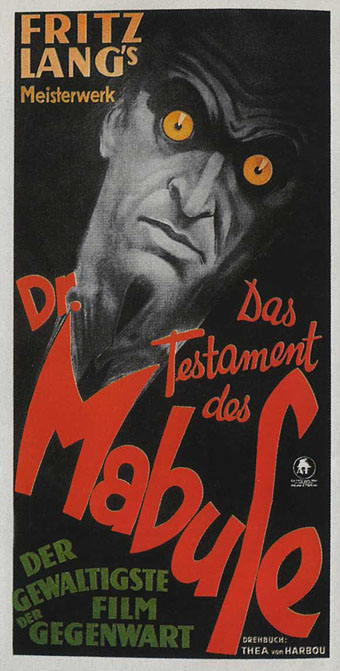
This picture of a séance in the 1920s circulates endlessly in the Tumblr labyrinth, usually without attribution so that many of the people seeing it won’t be aware that it’s a still (or a set photo) from Fritz Lang’s Dr. Mabuse, The Gambler (1922). Mabuse himself originates in a novel of the same name by Norbert Jacques published in 1921, the tale of a Moriarty-like super-criminal at large in Weimar-era Berlin. Lang made three films about the character, the first two of which, Dr. Mabuse, The Gambler, and The Testament of Dr. Mabuse (1933) feature Rudolf Klein-Rogge as the sinister Doctor, an actor better known today for his role as the mad scientist, Rotwang, in Lang’s Metropolis (1927). Testament was banned by Goebbels for being subversive. The third film, The Thousand Eyes of Dr. Mabuse (1960), was also one of the director’s last but it managed to revive interest in the character at a time when super-criminals were coming back into vogue. Wolfgang Preiss played Mabuse in this film, and in several sequels by other directors.

I’ve known about the Mabuse films for years, thanks in part to Lotte Eisner’s superb history of German silent cinema, The Haunted Screen (1952), yet despite this I’ve still not seen any of the films. That should change soon with the news that Eureka Video are releasing a new print of Dr. Mabuse, The Gambler on Blu-ray at the end of October, a restored version that will run for 280 minutes. The running time sounds excessive but Eisner points out that the film was originally screened in two parts: The Great Gambler: An Image of the Age, and Inferno: A Game for the People of our Age. In addition to Rudolf Klein-Rogge fixing everyone with his hawk-like glare there’s also Alfred Abel playing a weaker character than his master of the city in Metropolis. Moviemail describes Mabuse as “a criminal mastermind whose nefarious machinations are based around hypnotism, charlatanism, hallucinations, Chinese incantations, cold-blooded murder, opiate narcosis and cocaine anxiety”; how can one resist?
The posters gathered here are from a web trawl so lack the usual credits. The second film evidently had a wider distribution hence the greater quantity of posters from other countries.


